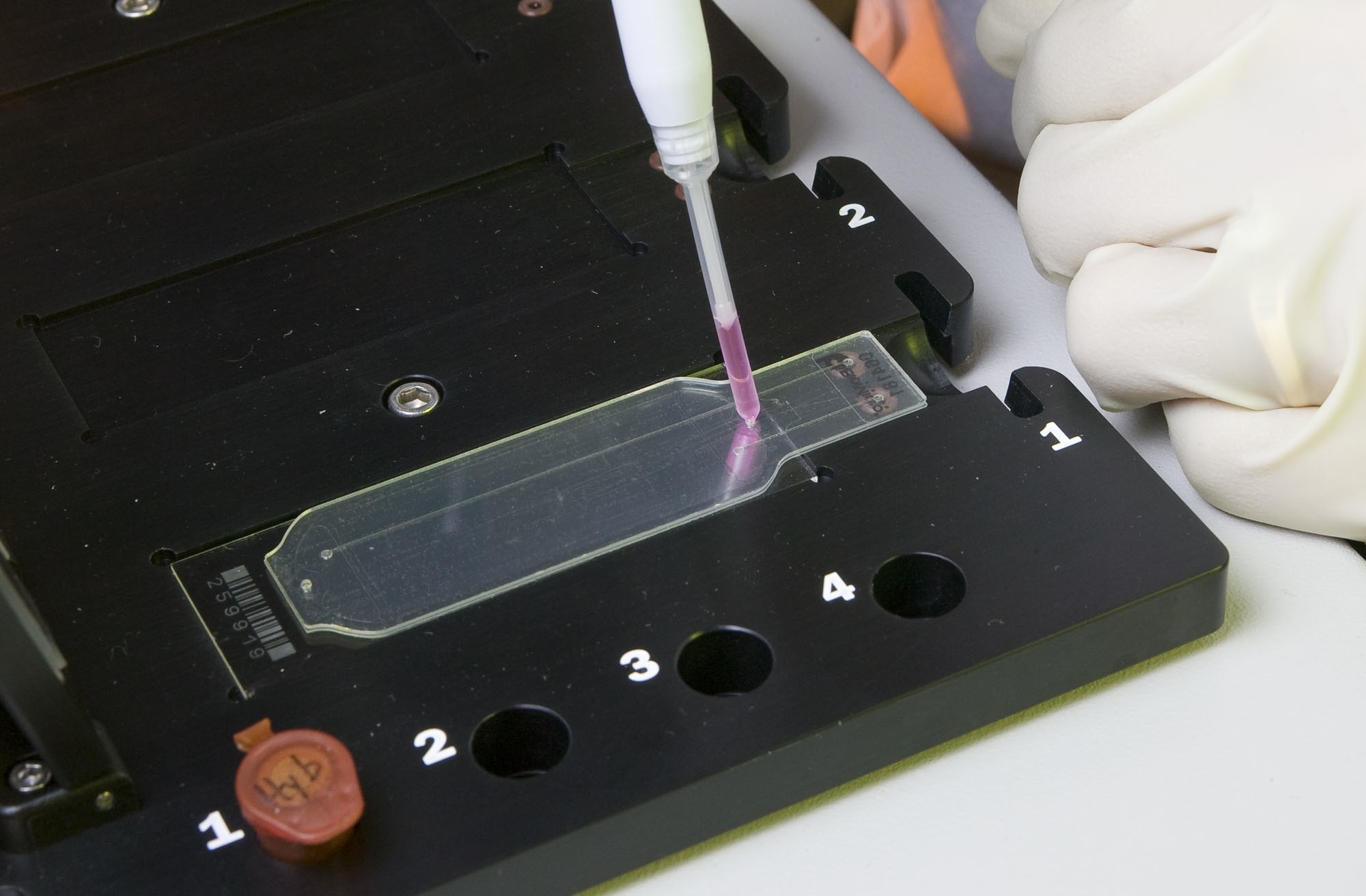Probe detects 2,000 viruses and 900 bacteria within 24 hours
May 10, 2010
The new Lawrence Livermore Microbial Detection Array (LLMDA) could enable law enforcement, medical professionals and others to detect within 24 hours any virus or bacteria that has been sequenced and included among the array’s probes.

Livermore Microbial Detection Array contains 388,000 probes used to detect viruses and bacteria (Jacqueline McBride/LLNL)
The LLMDA detects viruses and bacteria with the use of 388,000 probes that fit in a checkerboard pattern in the middle of a one-inch wide, three-inch long glass slide.
One advantage of the Livermore array is that it provides researchers with the capability of detecting pathogens over the entire range of known viruses and bacteria. Current multiplex polymerase chain reaction (PCR) techniques can at most offer detection from among 50 organisms in one test.
The LLMDA process starts with the purification of DNA or RNA from a sample, such as sputum or blood. The sample is next labeled with a fluorescent dye and hybridized on the microarray at 42 degrees C or about 107.6 degrees Fahrenheit. In turn, a fluorescent scanner and analysis software are used to detect the probes that have lit up, identifying the presence of viral or bacterial sequences.
Current plans call for the detection array to be evaluated for operational bioforensic use at the Frederick, Md.-based National Biodefense Analysis and Countermeasures Center of the U.S. Department of Homeland Security.
As the cost of the array is reduced, the LLMDA technology could be used to improve public health diagnostics; dozens of bacteria and viruses can be detected in a single test from the entire spectrum of sequenced organisms.
Currently, the researchers are testing a next-generation LLMDA with 2.1 million probes, representing about 178,000 viral sequences from some 5,700 viruses, about 785,000 bacterial sequences from thousands of bacteria, 237,000 fungal sequences from thousands of fungi, and about 202,000 protozoa sequences from 75 protozoa.
More info: Lawrence Livermore National Laboratory news
